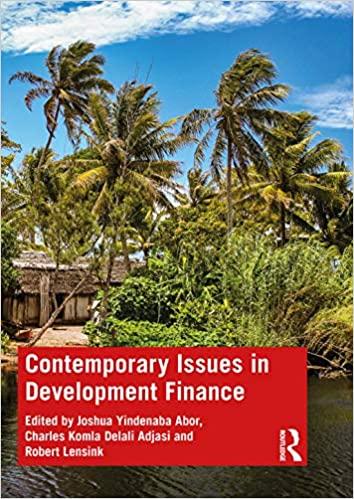Question
A capital budgeting project is being considered for implementation. The asset is a 3-year MACRS class asset with a four-year project life. The cost of
A capital budgeting project is being considered for implementation. The asset is a 3-year MACRS class asset with a four-year project life. The cost of the asset, and the first year revenue and operating cost projections are provided in the table below:
| Price of Asset | $280,000.00 |
| Freight / Installation | $20,000.00 |
| Depreciation Schedule: |
|
| Year 1 | $99,000.00 |
| Year 2 | $135,000.00 |
| Year 3 | $45,000.00 |
| Year 4 | $21,000.00 |
| Salvage Value | $30,000.00 |
| Increase in NWC | $25,000.00 |
| Revenues from project | $260,000.00 |
| Operating Costs (excluding depreciation) | $115,000.00 |
| Tax Rate | 34% |
| Required Rate of Return | 12% |
| Opportunity Cost - Sale of plant space | $100,000.00 |
| Expected Annual Growth Project Revenue | 4% |
| Expected Annual increase in operating cost | 8% |
Using Based on these projections, complete the Project Cash Flow Table below to calculate the relevant after tax cash flows, and then calculate the NPV and the IRR for the project. Show your numbers in thousands (200.00 for 200,000, etc). Read the problem carefully and consider all the data, especially the annual growth in revenue and operating costs.
| Year | 0 | 1 | 2 | 3 | 4 |
| Total Revenues |
|
|
|
|
|
| Operating Costs (exc. dep) |
|
|
|
|
|
| Depreciation |
|
|
|
|
|
| Earnings before taxes |
|
|
|
|
|
| Taxes |
|
|
|
|
|
| Net income |
|
|
|
|
|
| Add back Depreciation |
|
|
|
|
|
| Net operating cash flows |
|
|
|
|
|
| Equipment Cost |
|
|
|
|
|
| Installation |
|
|
|
|
|
| Change in Net Working Capital |
|
|
|
|
|
| Opportunity Cost of Project |
|
|
|
|
|
| Salvage Value |
|
|
|
|
|
| Tax on Salvage Value |
|
|
|
|
|
| Return of NWC |
|
|
|
|
|
| NET CASH FLOWS | Q-1 | Q-2 | Q-3 | Q-4 | Q-5 |
Q- 6: I/YR = _________
Q 7: Net Present Value = $
Q 8: IRR =
Question 1
What is the total investment cash outflow value counted against the project (CF-0)?
Enter the value in thousands (e.g. $125,750 should be entered as 125.75), and enter cash outflows as negative values
Question 2
What is the incremental after-tax cash flow for year 1 (CF1)?
Enter the value in thousands (e.g. $125,750 should be entered as 125.75)
Question 3
What is the incremental after-tax cash flow for year 2 (CF2)?
enter the value in thousands (e.g. $125,750 should be entered as 125.75)
Question 4
What is the incremental after-tax cash flow for year 3 (CF3)?
Enter the value in thousands (e.g. $125,750 should be entered as 125.75)
Question 5
What is the incremental after-tax cash flow for year 4 (CF4), including after-tax salvage value of asset and return of NWC and opportunity cost?
Enter the value in thousands (e.g. $125,750 should be entered as 125.75)
Question 6
What is the discount rate (I/YR) for this project?
Enter the discount rate as a whole percentage number, not in decimal form (i.e. 5% should be entered as 5 or 5.0 and NOT as 0.05).
Question 7
Based on the project's discount rate and incremental cash flows, what is the NPV of the project?
Enter the value in thousands (e.g. $125,750 should be entered as 125.75)
Question 8
Given the cost and incremental cash flows of the project, what is the project's IRR?
Enter the IRR value as a percentage, not in decimal form (e.g. 11.5% should be entered as 11.5 and NOT as 0.115)
Step by Step Solution
There are 3 Steps involved in it
Step: 1

Get Instant Access to Expert-Tailored Solutions
See step-by-step solutions with expert insights and AI powered tools for academic success
Step: 2

Step: 3

Ace Your Homework with AI
Get the answers you need in no time with our AI-driven, step-by-step assistance
Get Started


